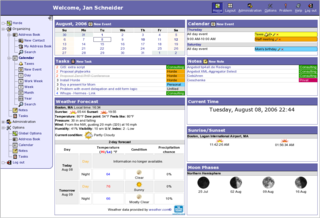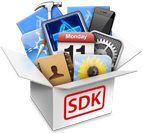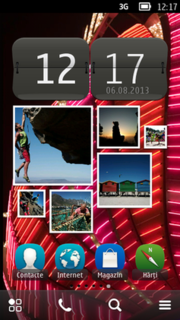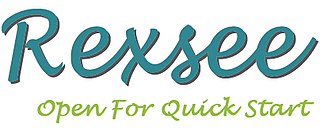| Developer(s) | Joe Hewitt |
|---|---|
| Initial release | July 5, 2007 |
| Stable release | 0.4 / August 6, 2009 |
| Written in | HTML, JavaScript, CSS |
| Operating system | Android, iOS, webOS |
| Platform | Mobile web applications |
| Type | Web application framework |
| License | New BSD License |
| Website | www |
iUI is a lightweight open source Web application framework consisting of a JavaScript library, Cascading Style Sheets (CSS), and images for developing advanced mobile web applications (webapps). [1] It allows developers unfamiliar with programming languages such as Objective-C, or who don't want to build native applications using proprietary software development kits (SDKs), to use plain HTML, CSS, and JavaScript to build native-looking webapps.
Originally known as iphonenav, iUI was created by Joe Hewitt [2] specifically for iPhone developers with the goal to "turn ordinary standards-based HTML into a polished, usable interface that meets the high standards set by Apple's own native iPhone apps." [3] It gave web applications running on Safari the look of a native application built with the iOS SDK. [4]
Currently, iUI supports most smartphones and tablets. Devices independently tested with the framework include: Palm Pre, HTC Dream/T-Mobile G1, HTC Magic/T-Mobile MyTouch 3G, HTC Hero/T-Mobile G2 Touch, Motorola CLIQ, Motorola Droid, Samsung Intercept, and all iOS devices. [5]
iUI has been used to develop a variety of web-applications. Notable examples include Bank of America's Mobile Site and Adelphi University's Mobile Web Application Suite AU2Go. [6]
In computing, cross-platform software is computer software that is designed to work in several computing platforms. Some cross-platform software requires a separate build for each platform, but some can be directly run on any platform without special preparation, being written in an interpreted language or compiled to portable bytecode for which the interpreters or run-time packages are common or standard components of all supported platforms.

A web application is application software that runs on a web server, unlike computer-based software programs that are run locally on the operating system (OS) of the device. Web applications are accessed by the user through a web browser with an active network connection. These applications are programmed using a client–server modeled structure—the user ("client") is provided services through an off-site server that is hosted by a third-party. Examples of commonly-used web applications include: web-mail, online retail sales, online banking, and online auctions.
Mobile app development is the act or process by which a mobile app is developed for mobile devices, such as personal digital assistants, enterprise digital assistants or mobile phones. These applications can be pre-installed on phones during manufacturing platforms, or delivered as web applications using server-side or client-side processing to provide an "application-like" experience within a Web browser. Application software developers also must consider a long array of screen sizes, hardware specifications, and configurations because of intense competition in mobile software and changes within each of the platforms. Mobile app development has been steadily growing, in revenues and jobs created. A 2013 analyst report estimates there are 529,000 direct app economy jobs within the EU then 28 members, 60 percent of which are mobile app developers.

Adobe AIR is a cross-platform runtime system currently developed by Harman International for building desktop applications and mobile applications, programmed using Adobe Animate, ActionScript, and optionally Apache Flex. It was originally released in 2008. The runtime supports installable applications on Windows, macOS, and mobile operating systems, including Android, iOS and BlackBerry Tablet OS.

JavaFX is a software platform for creating and delivering desktop applications, as well as rich web applications that can run across a wide variety of devices. JavaFX has support for desktop computers and web browsers on Microsoft Windows, Linux, and macOS, as well as mobile devices running iOS and Android.

The iOS SDK, formerly the iPhone SDK, is a software development kit (SDK) developed by Apple Inc. The kit allows for the development of mobile apps on Apple's iOS and iPadOS operating systems.
A mobile development framework is a software framework that is designed to support mobile app development. It is a software library that provides a fundamental structure to support the development of applications for a specific environment.

Apache Cordova is a mobile application development framework created by Nitobi. Adobe Systems purchased Nitobi in 2011, rebranded it as PhoneGap, and later released an open-source version of the software called Apache Cordova. Apache Cordova enables software programmers to build hybrid web applications for mobile devices using CSS3, HTML5, and JavaScript, instead of relying on platform-specific APIs like those in Android, iOS, or Windows Phone. It enables wrapping up of CSS, HTML, and JavaScript code depending upon the platform of the device. It extends the features of HTML and JavaScript to work with the device. The resulting applications are hybrid, meaning that they are neither truly native mobile application nor purely Web-based. They are not native because all layout rendering is done via Web views instead of the platform's native UI framework. They are not Web apps because they are packaged as apps for distribution and have access to native device APIs. Mixing native and hybrid code snippets has been possible since version 1.9.

MoSync is a discontinued free and open-source software development kit (SDK) for mobile applications. It is integrated with the Eclipse development environment. The framework produces native mobile applications for multiple platforms using C/C++, HTML5 scripting and any combination thereof. The target group for MoSync are both web developers looking to enter the mobile space, as well as the ordinary PC/Mac desktop developer with knowledge in C/C++ development.
Titanium SDK is an open-source framework that allows the creation of native mobile apps on platforms including iOS, Android and Windows UWP from a single JavaScript codebase, developed by Appcelerator.
jQT is an open-source Zepto/ JQuery plugin with native animations, automatic navigation, and themes for mobile WebKit browsers like iPhone, G1 (Android), and Palm Pre. It enables programmers to develop mobile applications with a native look and feel for the target device using HTML, CSS, and JavaScript.

Symbian is a discontinued mobile operating system (OS) and computing platform designed for smartphones. Symbian was originally developed as a proprietary software OS for PDAs in 1998 by the Symbian Ltd. consortium. Symbian OS is a descendant of Psion's EPOC, and was released exclusively on ARM processors, although an unreleased x86 port existed. Symbian was used by many major mobile phone brands, like Samsung, Motorola, Sony Ericsson, and above all by Nokia. It was also prevalent in Japan by brands including Fujitsu, Sharp and Mitsubishi. As a pioneer that established the smartphone industry, it was the most popular smartphone OS on a worldwide average until the end of 2010—at a time when smartphones were in limited use—when it was overtaken by iOS and Android. It was notably not as popular in North America.

RhoMobile Suite, based on the Rhodes open source framework, is a set of development tools for creating data-centric, cross-platform, native mobile consumer and enterprise applications. It allows developers to build native mobile apps using web technologies, such as CSS3, HTML5, JavaScript and Ruby. Developers can deploy RhoMobile Suite to write an app once and run it on the most-used operating systems, including iOS, Android, Windows Phone, Windows Mobile, Windows CE, Windows 10 Mobile and Windows Desktop. Developers control how apps behave on different devices. RhoMobile Suite consists of a set of tools for building, testing, debugging, integrating, deploying and managing consumer and enterprise apps. It consists of the products Rhodes, RhoElements, RhoStudio, RhoConnect, and RhoGallery, and includes a built-in Model View Controller pattern, an Object Relational Mapper for data intensive apps, integrated data synchronization, and a broad API set. These mobile development services are offered in the cloud and include hosted build, synchronization and application management.

Sencha Touch is a user interface (UI) JavaScript library, or web framework, specifically built for the Mobile Web. It can be used by Web developers to develop user interfaces for mobile web applications that look and feel like native applications on supported mobile devices. It is based on web standards such as HTML5, CSS3 and JavaScript. The goal of Sencha Touch is to facilitate quick and easy development of HTML5 based mobile apps which run on Android, iOS, Windows, Tizen and BlackBerry devices, simultaneously allowing a native look and feel to the apps.

Rexsee is a Chinese open source webapp platform that allows developers and companies to author mobile applications with web technologies, like PhoneGap. The different is Rexsee only support for developing Android-based mobile applications and open more API.
DaVinci is a development tool used to create HTML5 mobile applications and media content. It includes a jQuery framework, which is a JavaScript library, and can be used by developers and designers, to create web applications used on mobile devices, that have a user experience similar to native applications. Business applications, games, and rich media content, such as HTML5 multi-media magazines, advertisements, and animation, may be produced with the tool. DaVinci is based on standard web technology, including HTML5, CSS3, and JavaScript.
Crosswalk Project is an open-source web app runtime built with the latest releases of Chromium and Blink from Google. These are also used in Google Chrome. The project's focus is to provide the most up-to-date and innovative capabilities to web apps including experimental APIs and extensibility. A web app that bundles the Crosswalk Project runtime can install and run on different Android versions with consistent behavior and feature parity.
React Native is an open-source mobile application framework created by Facebook, Inc. It is used to develop applications for Android, Android TV, iOS, macOS, tvOS, Web, Windows and UWP by enabling developers to use React's framework along with native platform capabilities.

A progressive web application (PWA) is a type of application software delivered through the web, built using common web technologies including HTML, CSS and JavaScript. It is intended to work on any platform that uses a standards-compliant browser, including both desktop and mobile devices.
Flutter is an open-source UI software development kit created by Google. It is used to develop cross platform applications for Android, iOS, Linux, Mac, Windows, Google Fuchsia, and the web from a single codebase.